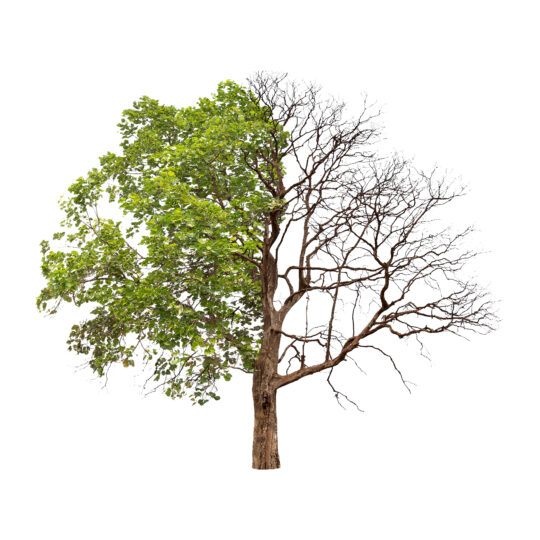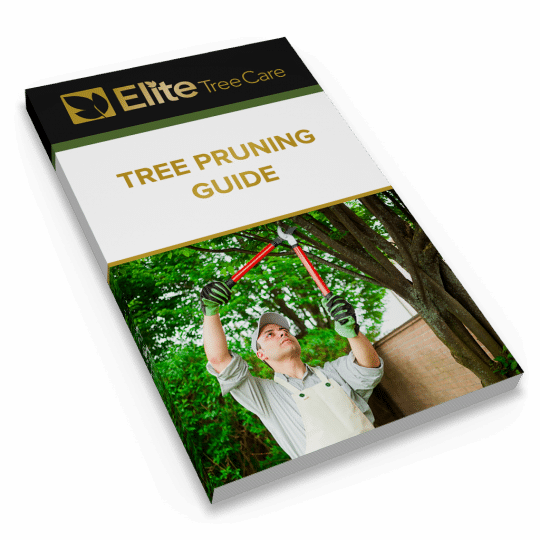Why Some Branches Die and Others Survive
How to Tell the Difference Between Nature and Problems
Posted
May 8, 2025

Once your tree is full of new leaves, you may notice some branches are still bare. This could be a sign of a problem, but it could also be a natural occurrence. Learn why some branches die and others survive and when to call a professional for help.
Signs of Dead Branches
Before all the leaves grow back on the tree, it’s easy to see which branches crisscross or have discolored growths that may be disease. This is one of the reasons why it’s better to prune trees in the winter. However, once all the leaves have grown back, it’s easier to see if any bare branches remain. This is another indication a branch may be dead and need pruning. Here are a few other signs of dead branches:
- Brittle. A branch is dry, flaky, and snaps easily when bent.
- No buds. While some branches may take longer to sprout new growth, a lack of buds is a bad sign.
- Brown bark. Healthy branches are green beneath the bark. If you scratch away the top layer and it’s brown or dry, it’s a sign of a dead branch.
If you notice any of these signs on a bare branch, consider pruning it to help reinvigorate the rest of the tree.
Why Some Branches Die
There are many reasons why some tree branches die, and not all of them are necessarily bad. Here are some common causes of dead branches:
- Self-thinning. Trees go through a natural pruning process to help heal itself and improve its overall health. Dropping leaves and branches helps direct energy to more productive growth.
- Breakage. You may find broken branches after extreme wind or storm damage. Larger branches may also fall from a tree that can’t support its weight.
- Light. Shaded branches may not receive enough sun for proper photosynthesis.
- Drought. Lack of water prohibits sufficient distribution among the branches.
- Drainage. Soil compaction or poor drainage affects the amount of water that can get to roots to promote healthy growth.
- Stress. In addition to extreme weather and improper watering, trees can become stressed after planting, transplanting, nearby construction, and other natural or man-made factors.
- Nutrients. Like any living thing, a nutrient imbalance can lead to poor health.
- Infestations. Wood-boring insects and fungal infections can weaken branches and eventually kill it if left untreated.
If you notice any dead branches, you can start by improving conditions to narrow down some of these causes:
- Make sure to plant native trees where they will get enough light.
- Prune broken branches.
- Water deeply to promote strong root growth.
- Test the soil to assess available nutrients.
Once you’ve checked off this list, if you still sense your tree isn’t thriving, it’s time to contact an arborist.
When to Call for Help
A few broken or dead branches is not always a cause for concern. But you should continue to monitor the tree to see if the problem persists. If you notice any of the following signs, you should consider contacting a local arborist sooner rather than later to help treat and support your tree.
- Multiple dead branches. If they’re all in the same area, it could be an indication of pests, disease, or root problems that require professional treatment.
- Sudden dieback. If a large number of branches suddenly dies, it could be a more prominent disease.
- Support limbs. If heavier branches are infected, this could impact the structure of the tree and make it more weak and hazardous.
Consult with an arborist to help determine the cause of the dead branches and consider the next steps. Caught early, certain pests and diseases can be treated effectively to save your tree. Proper pruning also helps ensure the plant recovers and has a healthy future. Contact Elite Tree Care to help assess your tree and determine what steps, if any, you can take to prevent more branches from dying.

Download Your FREE Tree Pruning Guide
Learn how, when, and how much to trim or prune your trees to maximize their health and beauty. This guide covers the factors that go into tree trimming (pruning) and will help you make a more informed decision about hiring a professional tree service.